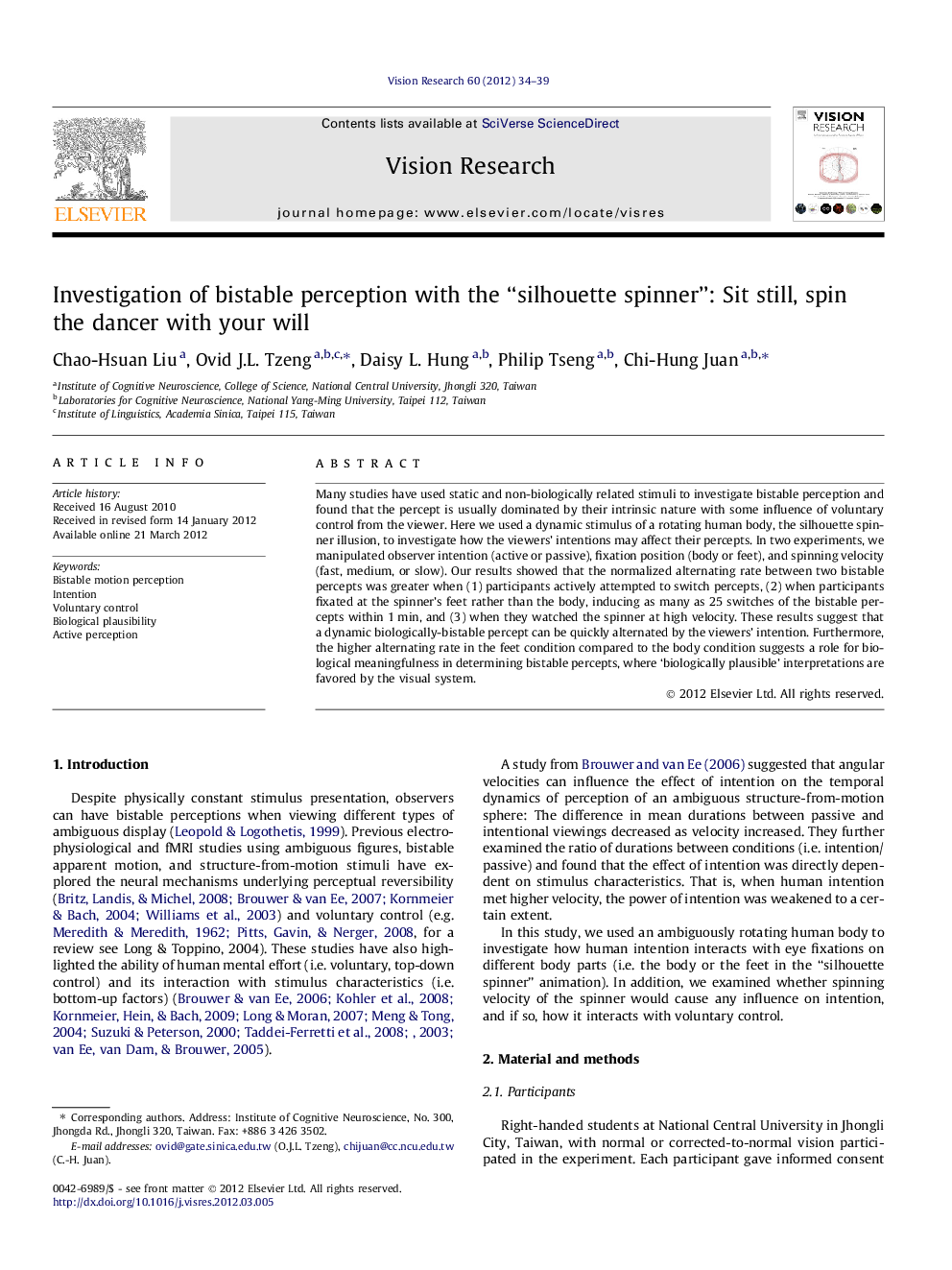| Article ID | Journal | Published Year | Pages | File Type |
|---|---|---|---|---|
| 4033959 | Vision Research | 2012 | 6 Pages |
Many studies have used static and non-biologically related stimuli to investigate bistable perception and found that the percept is usually dominated by their intrinsic nature with some influence of voluntary control from the viewer. Here we used a dynamic stimulus of a rotating human body, the silhouette spinner illusion, to investigate how the viewers’ intentions may affect their percepts. In two experiments, we manipulated observer intention (active or passive), fixation position (body or feet), and spinning velocity (fast, medium, or slow). Our results showed that the normalized alternating rate between two bistable percepts was greater when (1) participants actively attempted to switch percepts, (2) when participants fixated at the spinner’s feet rather than the body, inducing as many as 25 switches of the bistable percepts within 1 min, and (3) when they watched the spinner at high velocity. These results suggest that a dynamic biologically-bistable percept can be quickly alternated by the viewers’ intention. Furthermore, the higher alternating rate in the feet condition compared to the body condition suggests a role for biological meaningfulness in determining bistable percepts, where ‘biologically plausible’ interpretations are favored by the visual system.
► Human can intentionally alternate their percepts of a bistable moving body rapidly. ► The alternate rate can be as many as 25 switches of the bistable percepts per minute. ► The alternate rate depends on the biological constraint of the bistable stimuli.
